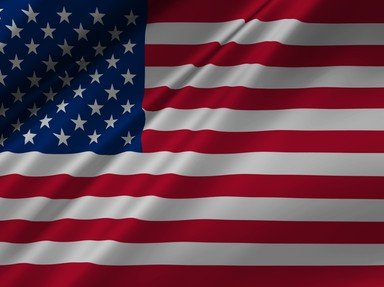Quiz Answer Key and Fun Facts
1. Bill Parcells was one of the most dominant coaches in NFL history, leading the Dallas Cowboys, New England Patriots, New York Giants, and New York Jets. From earliest to latest, in what order did he coach those teams?
2. Michael Jordan was of course a basketball legend, winning numerous scoring titles, MVP awards in the regular season and playoffs, and playing on one NCAA champion and six NBA champions. But he also briefly dabbled in professional baseball. At what point in his career did he play minor league baseball?
3. Billie Jean King won plaudits as an athlete, as a business woman, and a social pioneer. Of the tennis and athletic accomplishments listed below, which occurred latest in her career?
4. Ted Williams was both a baseball hero and American hero, noted for being the last hitter (of the 20th century) to have a .400 batting average for a season, his two baseball triple crowns, his two MVP awards, and military service in two wars. Which of the following is in correct chronological order, starting from the earliest accomplishment?
5. The versatile Deion Sanders played for four MLB teams and five NFL teams during his professional sports career. Which of the following listings of teams he played for is in correct chronological order, based on the first game he played for a team, with the earliest team listed first?
6. Larry Brown, a basketball coach whose talents were exceeded only by his restlessness, coached several college and pro teams. After leaving Kansas for the NBA, he coached the San Antonio Spurs, Los Angeles Clippers, Philadelphia 76ers, Detroit Pistons, and New York Knicks. This covers almost all of the 18 years from 1988 to 2006 - but not quite. Which other NBA team, coached by Brown during those years, is missing from this list?
7. Brett Favre led the Green Bay Packers to their first Super Bowl title in 29 years and won three NFL MVP awards and a raftload of other distinctions. His memorable 41-7 victory over the Oakland Raiders, in a game played the day after his beloved father passed away, is just one of his noteworthy achievements. Which of the following is true about that game?
8. Ken Dryden was everything a hockey goalie could have been, dominating the NHL in 1970s. He won five Vezina Trophies (for being the league's best goalie) in his eight seasons. His NHL recognitions actually began before winning the 1971-72 Calder Trophy as Rookie of the Year. What honor or distinction did he win before being Rookie of the Year?
9. Cal Ripken became baseball's "Iron Man," playing 3,001 major league games, all with the Baltimore Orioles, and having 2,632 of those come in a streak of consecutive games, breaking Lou Gehrig's venerable record of 2,130 straight games played. Despite having almost 90% of his career be part of that streak, not all of his achievements occurred during that time. Which accomplishment listed below happened either before his streak began, or after it ended?
10. Tiger Woods joined Bobby Jones as the only golfer to have won 10 majors before turning 30, and has won each major at least twice. What was the first major that he won?
Source: Author
d2407
This quiz was reviewed by FunTrivia editor
gtho4 before going online.
Any errors found in FunTrivia content are routinely corrected through our feedback system.
